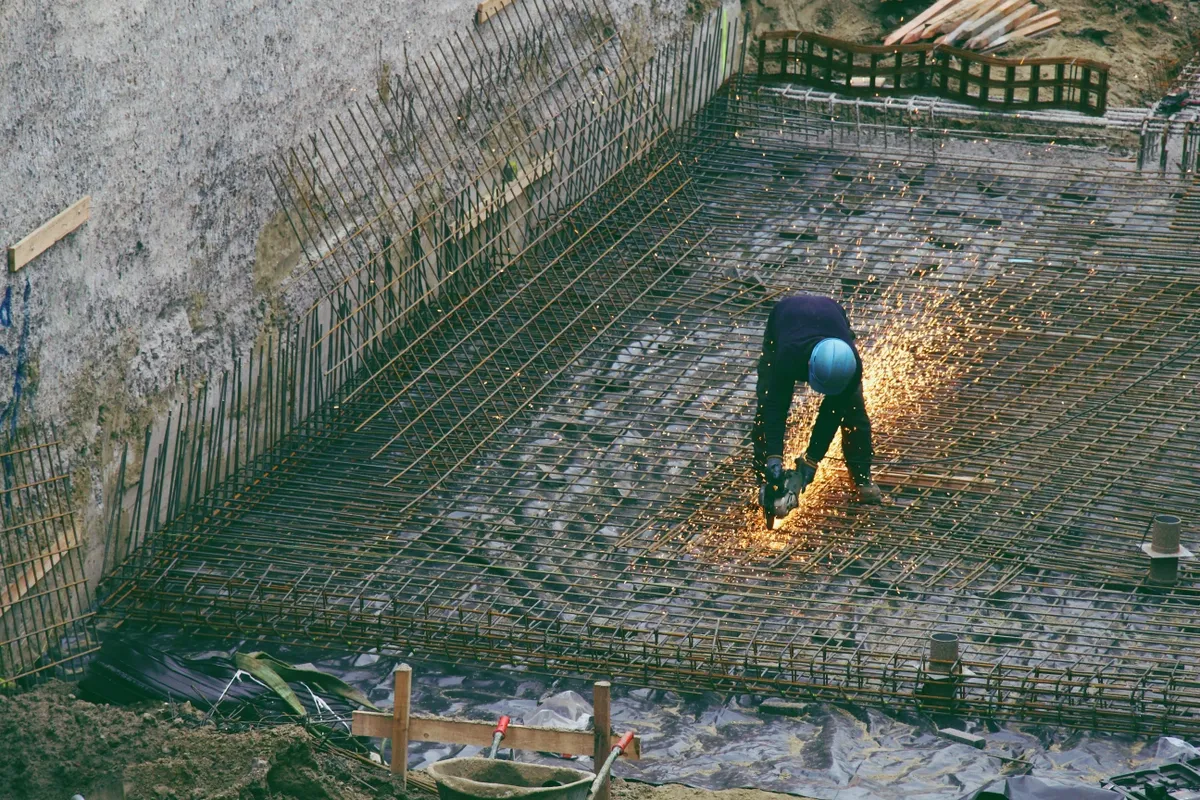
Remote site inspections have become an essential component in engineering projects, offering a practical solution to the limitations of traditional, on-site inspections. Engineering firms are increasingly leveraging advanced technologies such as drones, video conferencing tools, and specialized software to ensure project quality and compliance from afar. This shift not only addresses the growing need for efficiency and cost-effectiveness but also enhances the accuracy and reliability of inspections, ensuring that engineering projects remain on track and within regulatory standards.
The Importance of Remote Site Inspections in Engineering
Remote inspections are a modern approach to traditional on-site assessments, where advanced technologies such as video calls, live-streaming, and augmented reality allow professionals to remotely assess and evaluate assets, facilities, and projects (source). This procedure allows for the monitoring and control of the condition and operation of machines, facilities, or processes from a distance. Inspectors can use technology and remote communication equipment like smart glasses and cameras to collect visual data, measurements, and other inspection information through communication with the on-site workers (source).
Challenges Faced by Engineering Firms in Traditional Site Inspections
Traditional site inspections present several challenges, including safety concerns, a shortage of skilled workers, and the rapid pace of technological advancements. Inspectors often work in hazardous environments such as oil refineries, chemical plants, or construction sites, necessitating proper training, protective equipment, and protocols to minimize risks. Additionally, there’s a shortage of qualified personnel with expertise in various inspection techniques, making it difficult for companies to meet the demand for inspections. Furthermore, keeping up with technological advancements and investing in new inspection tools and equipment can be expensive for companies (source).
Traditional paper- or Excel-based engineering inspection methods are inefficient and prone to errors. Inspections generate a vast amount of data, including images, sensor readings, and other forms of measurement. Efficiently managing, storing, and analyzing this data can be a significant challenge (source).
Benefits of Remote Inspections for Engineering Projects
Remote inspections can overcome the challenges of traditional on-site inspections by reducing time, cost, and safety risks for inspectors while also improving overall effectiveness. These technologies involve data collection, information extraction, and compliance checks (source).
By adopting remote inspections, companies can reduce costs and save time. Since inspectors do not need to travel to the site, inspections can be conducted promptly, and findings can be submitted faster for processing. This reduces scheduling conflicts and allows owners and managers to focus their time on other essential tasks (source). Moreover, remote inspections can increase the number of inspections that can be completed in a day by eliminating the need to travel to the site, thereby reducing the carbon footprint of the workforce (source).
With the current labor shortage affecting the inspection and permitting process, remote inspections can help keep progress moving. Digital technologies offer innovative solutions to overcome these obstacles (source). Therefore, remote inspections in engineering projects offer significant benefits and efficiencies, helping to overcome the challenges of traditional site inspections and transforming the way engineering firms operate.
Technological Tools for Remote Site Inspections
In the evolving landscape of engineering, technological advancements have made remote site inspections more efficient, accurate, and safe. Three primary tools are instrumental in this transformation: drones, video conferencing tools, and specialized software.
Use of Drones for Aerial Inspections and Surveying
Drones, or unmanned aerial vehicles (UAVs), have revolutionized the way engineering firms conduct site inspections. These remote-controlled devices can access hard-to-reach areas, capturing high-resolution visual data without putting inspectors at risk. By performing visual checks and gathering data on large assets, drones enhance the efficiency of inspections while significantly reducing the risks associated with manual checks. For instance, drones can easily navigate through hazardous environments such as construction sites or chemical plants, providing detailed imagery and data for thorough assessments (source). This capability allows firms to conduct comprehensive inspections from a safe distance, ensuring both safety and accuracy.
Video Conferencing Tools for Real-Time Collaboration and Inspection
Video conferencing tools have become invaluable for real-time collaboration and inspection in engineering projects. Platforms like GitHub, Jira Cloud, Stack Overflow for Teams, and Backlog facilitate seamless communication and task management among team members, regardless of their physical location (source). These tools enable inspectors to conduct live virtual inspections, share real-time updates, and collaborate on problem-solving with on-site teams. The ability to communicate instantly and share visual data helps in making informed decisions quickly, ensuring that project timelines and quality standards are maintained.
Specialized Software for Data Collection, Analysis, and Reporting
Specialized software plays a critical role in data collection, analysis, and reporting during remote site inspections. Tools like Excel, Python, R, Tableau, and MySQL are widely used for managing and analyzing inspection data (source). These applications help engineers extract valuable insights from the data collected, enabling them to make data-driven decisions. Process engineering software, in particular, is essential for creating graphical dashboards, generating reports, and ensuring compliance with industry standards (source). This software streamlines the entire inspection process, from data collection to analysis, making it easier for engineering firms to maintain high levels of accuracy and reliability in their projects.
By leveraging these technological tools, engineering firms can conduct remote site inspections more effectively, ensuring project quality and compliance while minimizing risks and costs. As remote work continues to gain traction, the adoption of these tools will become increasingly essential for successful engineering project management.
Best Practices for Conducting Remote Site Inspections
Conducting remote site inspections requires meticulous planning, accurate data collection, and strict adherence to regulatory standards. Here are some best practices to ensure the effectiveness of these inspections.
Preparing for a Remote Inspection: Planning and Coordination
Successful remote inspections start with thorough planning and coordination. Establishing Standard Operating Procedures (SOPs) is crucial; these guidelines should delineate the objectives and criteria of the inspection, ensuring all team members understand their roles and responsibilities. Selecting the appropriate tools and technology is another essential step. Depending on the project’s scope, various devices—such as drones, cameras, sensors, and scanners—may be necessary to collect comprehensive data. Utilizing cloud-based platforms, mobile apps, and web portals can facilitate data access, analysis, and reporting, making the process more streamlined and efficient (source).
Ensuring Data Accuracy and Reliability
Ensuring the accuracy and reliability of the data collected during remote inspections is paramount. Advanced technologies are addressing traditional inspection challenges by minimizing time, cost, and safety risks while enhancing overall effectiveness. These technologies include sophisticated data collection tools, advanced information extraction methods, and stringent compliance checks (source). Employing high-quality equipment and software ensures that the data gathered is precise and reliable, which is critical for making informed decisions and maintaining project quality.
Maintaining Compliance with Industry Standards and Regulations
Remote Virtual Inspections (RVI) have revolutionized the industry by offering a dynamic and efficient alternative to on-site inspections. RVIs enable licensed professionals to conduct thorough inspections remotely, ensuring compliance with all relevant codes and standards. This approach not only enhances efficiency and safety but also improves accessibility and cost-effectiveness (source). Adhering to industry regulations and standards through meticulous planning and execution of RVIs helps maintain the integrity and quality of engineering projects.
Leveraging Minute7 for Efficient Time and Expense Tracking During Remote Inspections
Time and expense tracking are critical aspects of managing remote inspections. Minute7 provides a robust platform for tracking hours and expenses, ensuring that resources are monitored and managed efficiently. By allowing employees and contractors to log their time and expenses from any device, Minute7 offers unparalleled convenience and accessibility. The platform’s seamless integration with QuickBooks further enhances its utility, facilitating efficient billing, reporting, and payroll processing. This makes Minute7 an invaluable tool for companies conducting remote site inspections, helping them maintain control over their projects and ensure that all aspects are accounted for accurately (source).
By adhering to these best practices, engineering firms can conduct effective and efficient remote site inspections, ensuring project quality and compliance while optimizing time and resource management.
How Minute7 Supports Effective Remote Site Inspections in Engineering Projects
In conclusion, remote site inspections are transforming the way engineering firms operate, providing innovative solutions to overcome traditional challenges and ensuring project quality and compliance. By leveraging advanced technologies such as drones, video conferencing tools, and specialized software, engineering firms can enhance the efficiency, accuracy, and safety of their inspections.
However, an often overlooked but crucial aspect of remote inspections is the efficient management of time and expenses. This is where Minute7 comes into play. Minute7 offers a comprehensive platform that simplifies time tracking and expense reporting, crucial for the successful execution of remote inspections. With features like timesheets, mileage tracking, and the ability to attach receipts, Minute7 ensures that all data is accurately recorded and easily accessible.
Moreover, the seamless integration with QuickBooks allows for streamlined billing and payroll processes, eliminating the complexity of manual data entry and reducing the risk of errors. This integration is particularly beneficial for firms that need to keep meticulous records of time spent and expenses incurred during inspections, enabling better project management and financial oversight.
Minute7’s user-friendly mobile app further enhances accessibility, allowing inspectors to log their hours and expenses in real-time, regardless of their location. This ensures that all team members can contribute to accurate and timely reporting, facilitating better coordination and decision-making.
In essence, Minute7 not only supports the logistical aspects of remote site inspections but also enhances overall project management by providing a reliable, efficient, and accessible platform for time and expense tracking. As remote work continues to evolve in the engineering sector, tools like Minute7 will be instrumental in helping firms navigate the complexities of remote site inspections, ensuring that projects remain on track, within budget, and compliant with industry standards.
For engineering firms looking to adopt remote site inspections, integrating Minute7 into their workflow can provide a significant advantage. By offering a robust solution for managing time and expenses, Minute7 enables firms to focus on what they do best—delivering high-quality engineering projects. To learn more about how Minute7 can support your remote inspection needs, visit Minute7.



